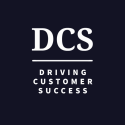Top 7 Metrics Every Customer Success Manager Should Know
(4-min read)
Welcome to the 35th edition of my weekly Customer Success Café newsletter!
1,175 smart people level up their game in under 5 mins every Sunday.
If you are not subscribed yet, sign up now to make sure you get the next editions delivered to your inbox!

Metrics are fundamental to tracking your customers’ success.
But as the management expert Peter Drucker once said, you can’t manage what you can’t measure, right?
Today, there are thousands of CS teams out there focusing on the wrong and outdated KPIs.
And measuring things that don’t matter is a waste of time, energy, and resources.
So here are the 7 core metrics every CSM should know by heart:
Top 7 Metrics Every Customer Success Manager Should Know
1/ NRR: Net Revenue Retention
Calculates the percentage of recurring revenue from your existing customers over time.
It gives you a great picture of growth and revenue flow based on your MRR (monthly recurring revenue):

Example:
- Starting MRR = $50k
- Expansion MRR = $10k
- Churned MRR = $5k
=> NRR = (50 + 10 – 5)/50 = 110% => growth
⚡If NRR < 100% => danger! you lose more than you grow.
2/ GRR: Gross Revenue Retention
Also called Gross Renewal Rate.
It’s like NRR, but with a major difference: it does not include expansion revenue.

The highest possible value for GRR is 100% and measures revenue stability.
⚡Across all SaaS companies, the median GRR is around 90%.
⚡GRR < 80% => danger!
3/ ARR: Annual Recurring Revenue
The amount of money your company gets from its customers every year from:
A: subscription cost for one year
B: recurring revenue from add-ons or upgrades
C: churn, revenue lost from cancellations
ARR = [A + B] – C
Example:
- 3-year subscription for $3M
- B = $300k
- C = $100k
=> ARR = [$1M + $300k] – $100k = $1,2M
⚡ARR = 12 x MRR
4/ CES: Customer Effort Score
Measures what it takes to perform a given action with your products or services.
To find this out, survey your customers by asking the following two questions, on a scale of 1-10:
- How easy was it to solve your problem?
- How much effort did it require?
CES = Sum of all scores / total number of responses
⚡the more response you get, the better.
5/ LTV (or CLV): Customer Lifetime Value
A key indicator showing how much money a customer brings into your company over the lifespan.
LTV = [Customer $$] x [average customer lifespan]
Example:
- ARR = $300k with an average customer lifespan of 2 years
=> LTV = $600k
6/ CRR: Customer Retention Rate
Gives you the percentage of customers you keep compared to those you lose over a given period of time

Example:
- 100 customers at the start of the period.
- 110 customers at the end
- 20 new customers
=> CRR = 110-20 / 100 = 90% (you lost 10 customers between)
7/ CAC: Customer Acquisition Cost
Tells you how much money you spend in total including marketing and sales activities to acquire one customer.

Example:
- Total acquisition $$ = $100k in Sales commissions + $50k marketing spend
- New customers = 100
=> CAC = 150.000 / 100 = $1500
And that’s it.
Focus on these core metrics so you can explore others I’ve described in a previous edition here.

Hakan Ozturk
Founder, theCScafe.com, #1 Weekly Customer Success Newsletter
Hakan Ozturk is a Paris-based Customer Success leader with over 15 years of experience in the computer software industry. Passionate about driving growth and delivering value to strategic customers, Hakan has established himself as a trusted industry expert. As the Founder of The Customer Success Café Newsletter and TopCSjobs.com, Hakan provides valuable industry insights and daily-updated job opportunities worldwide in the field of Customer Success. Connect with Hakan to boost your career in CS and your company’s potential for massive growth.

Leave a Reply